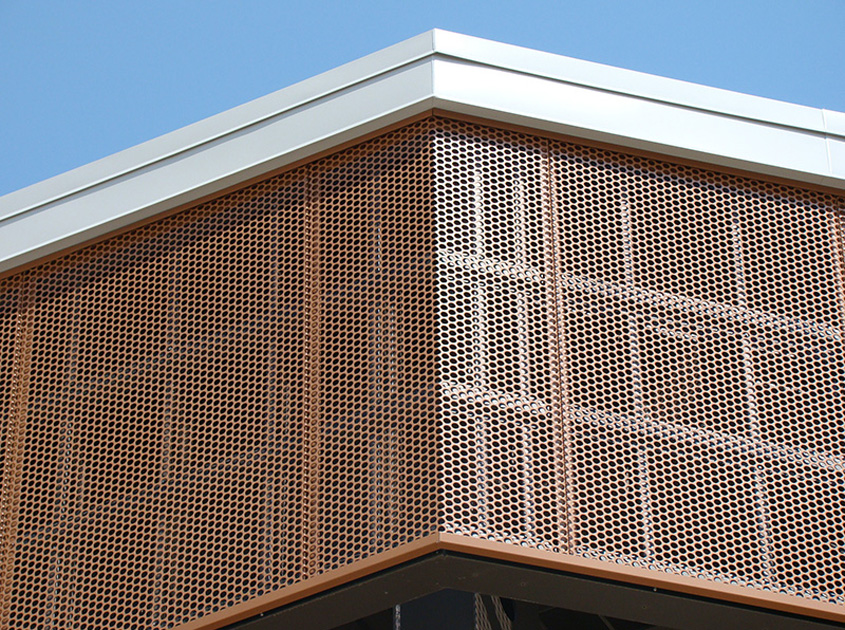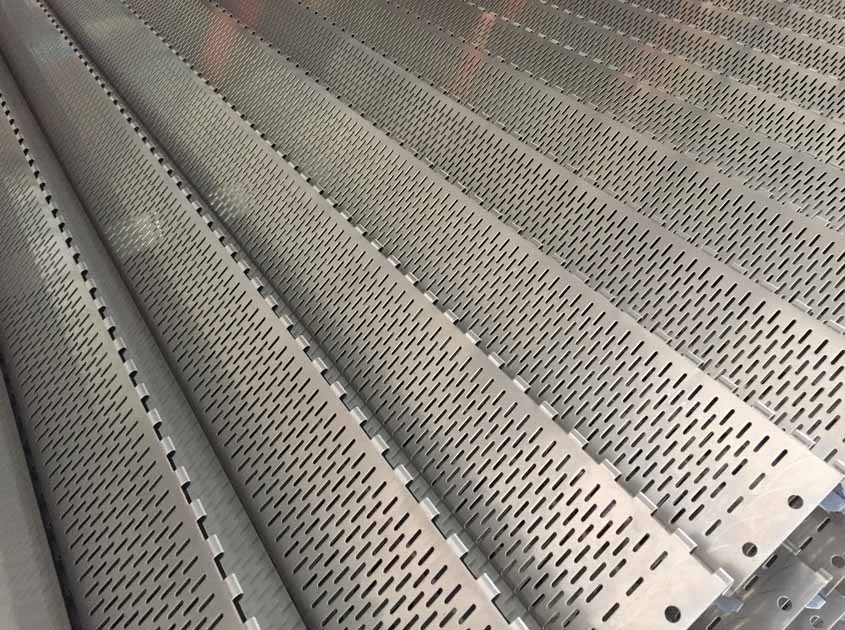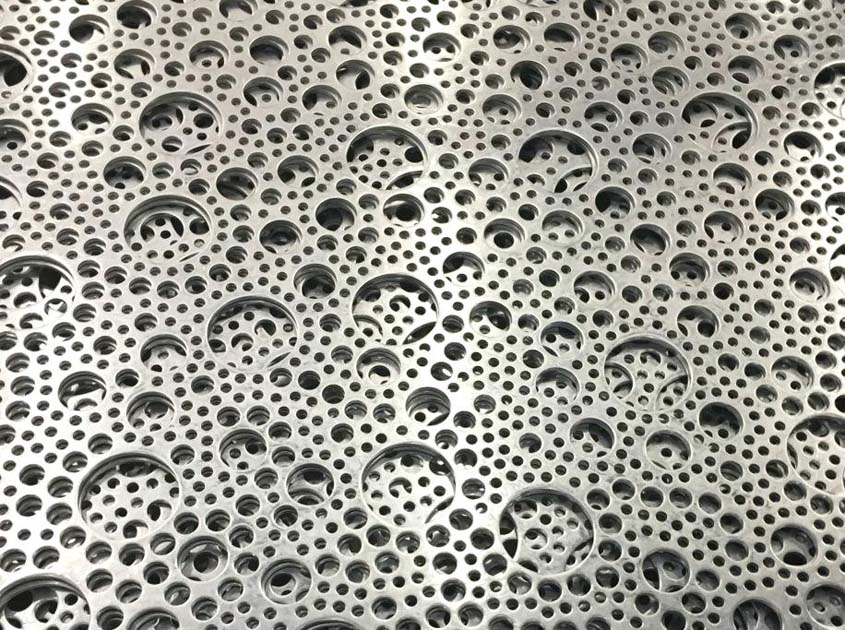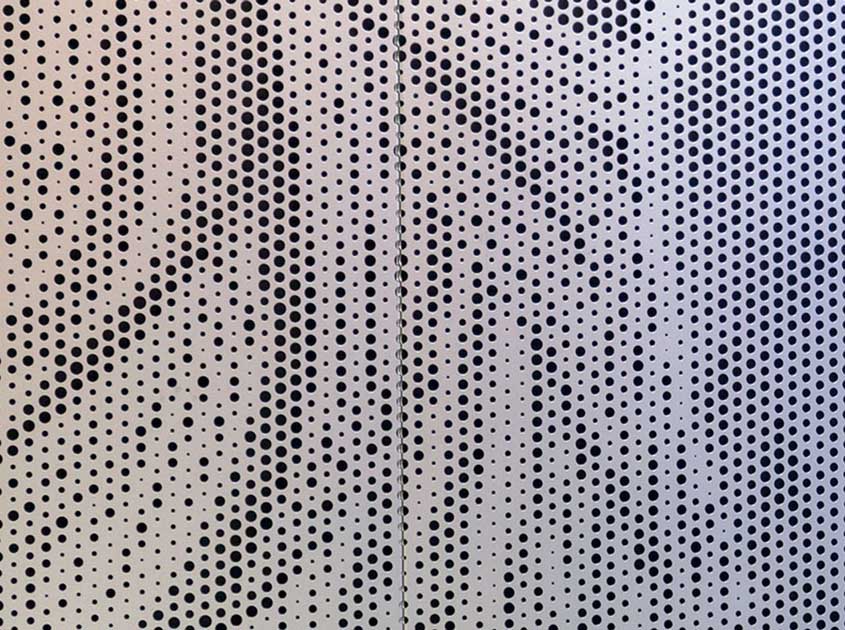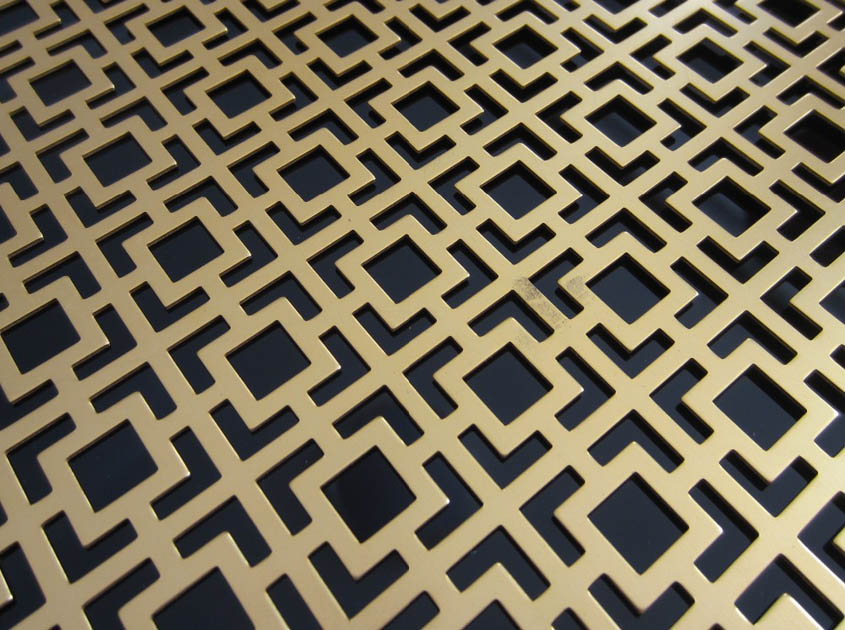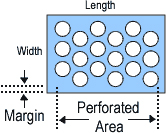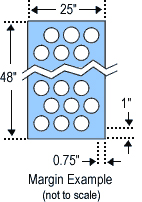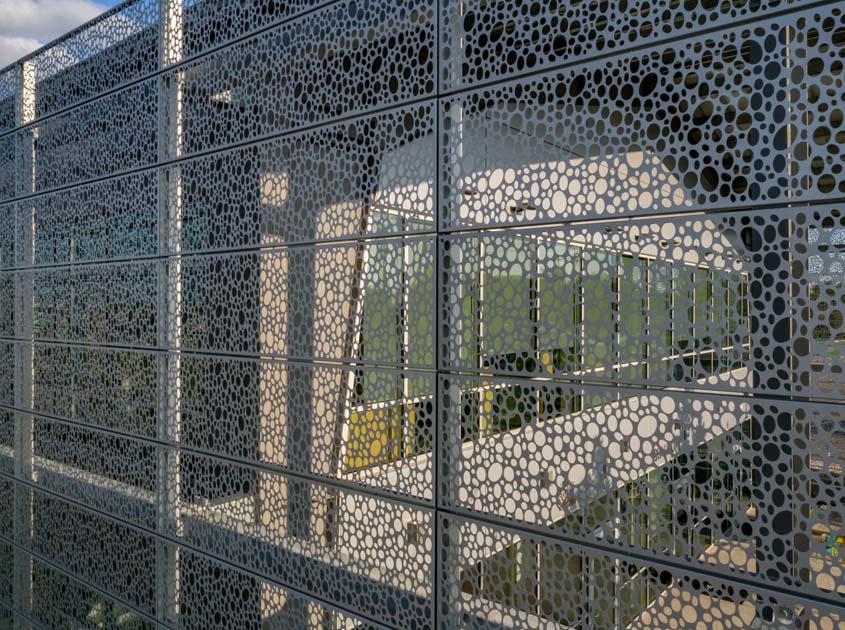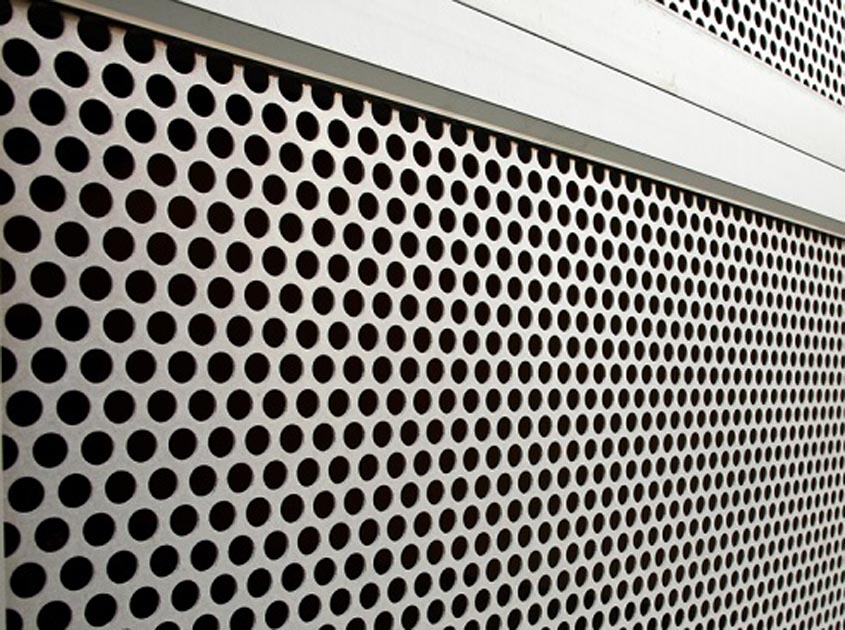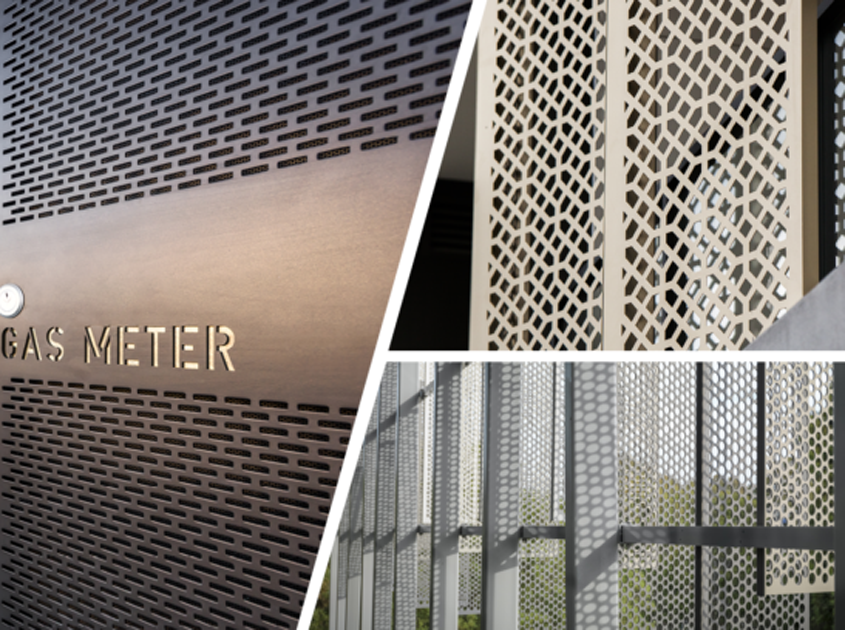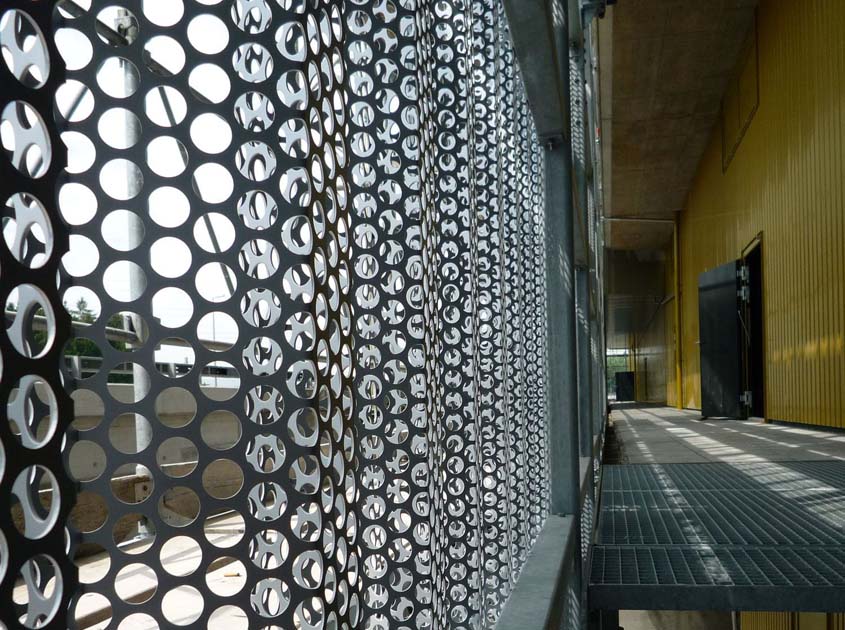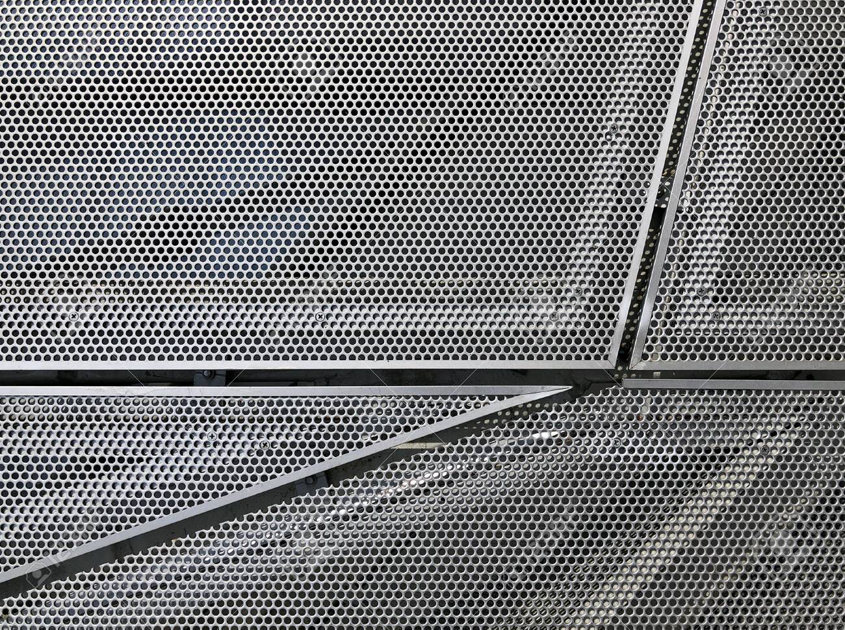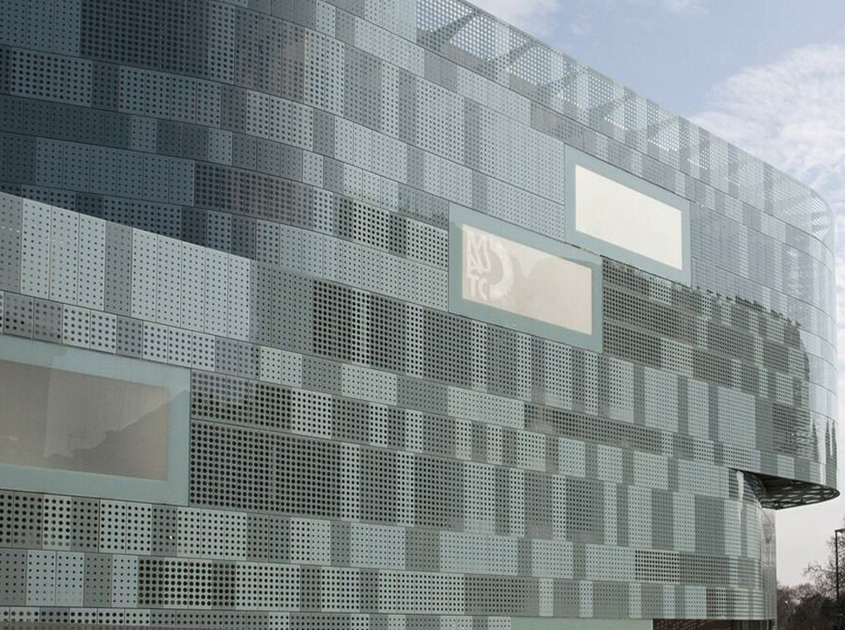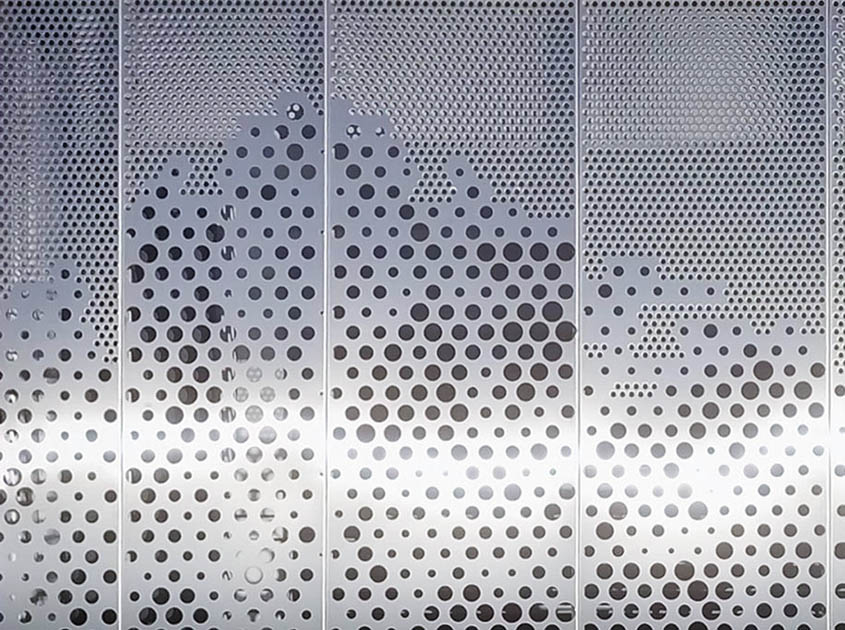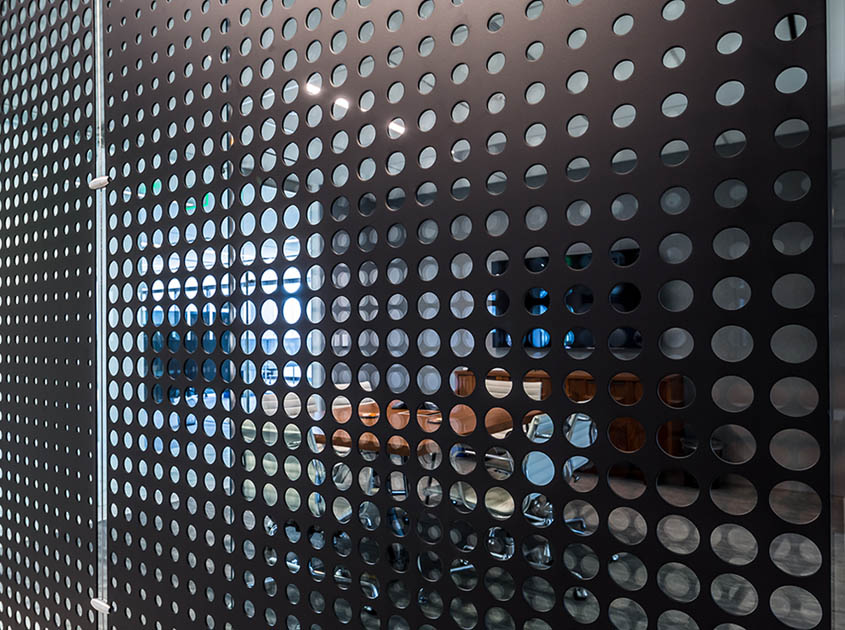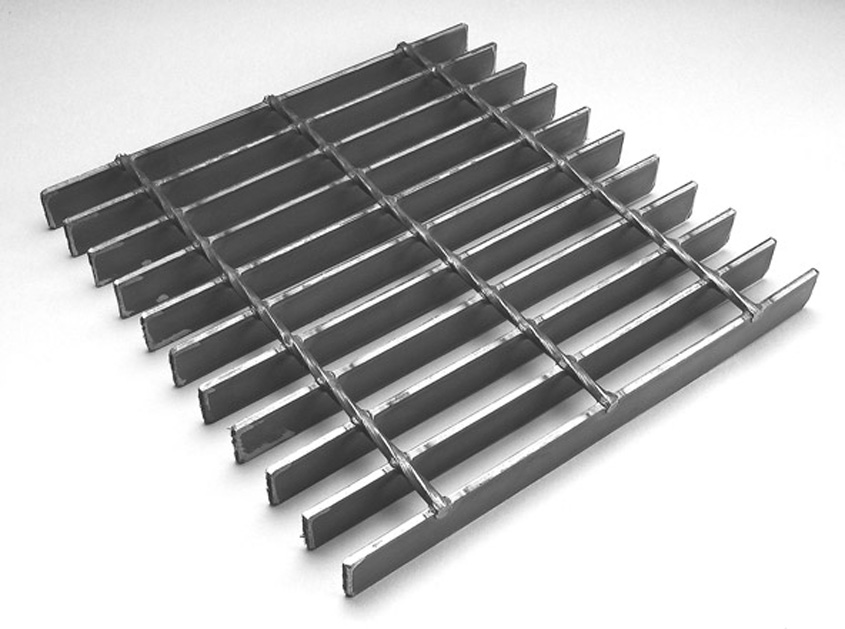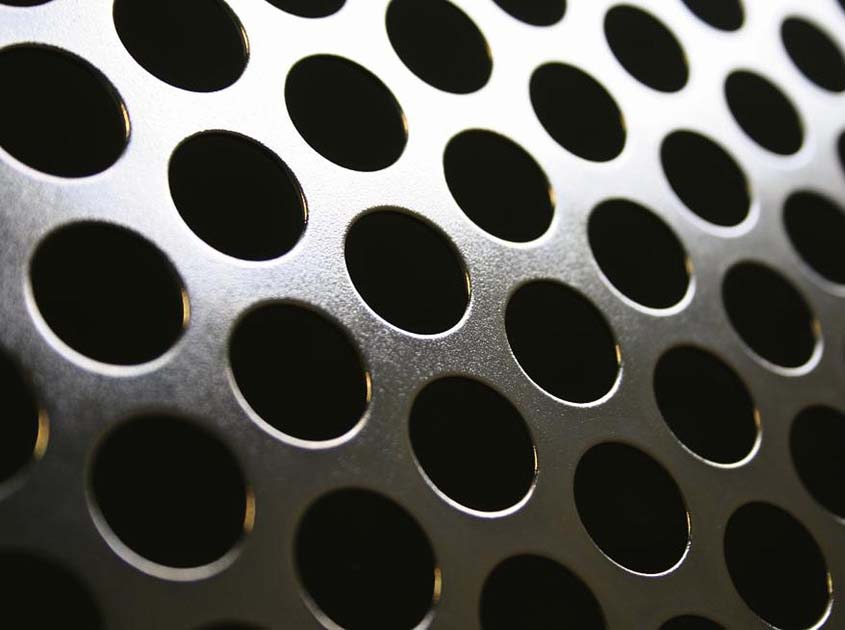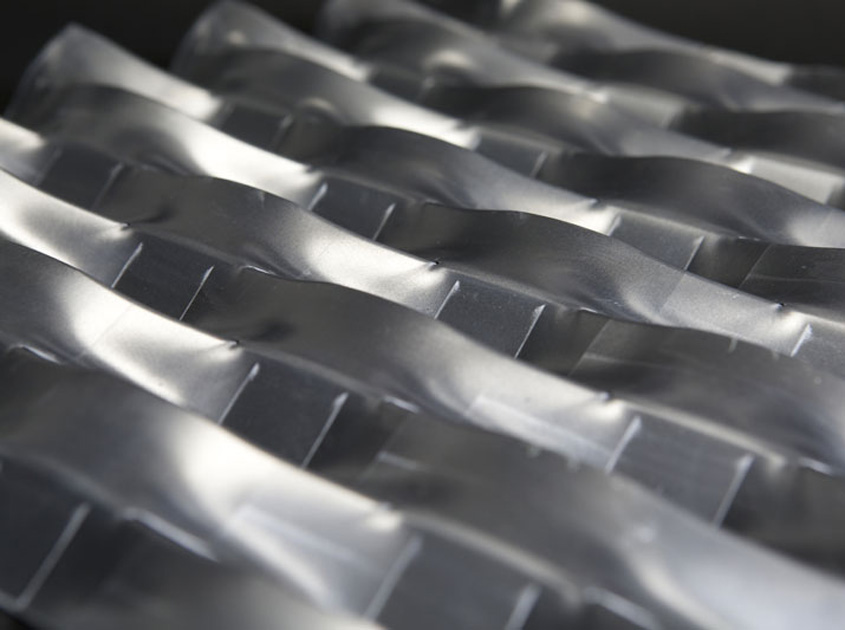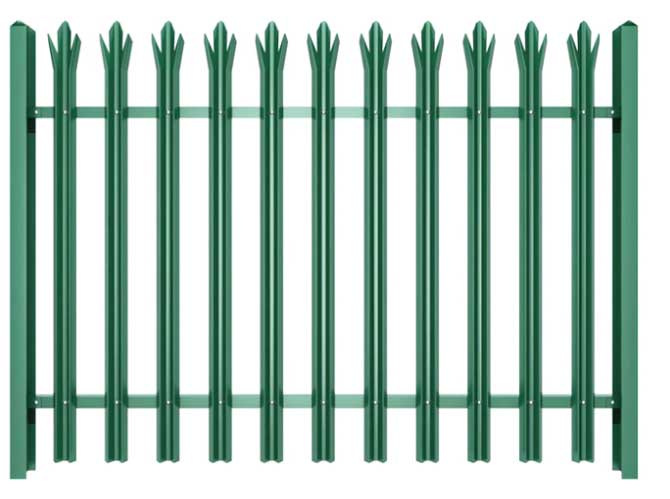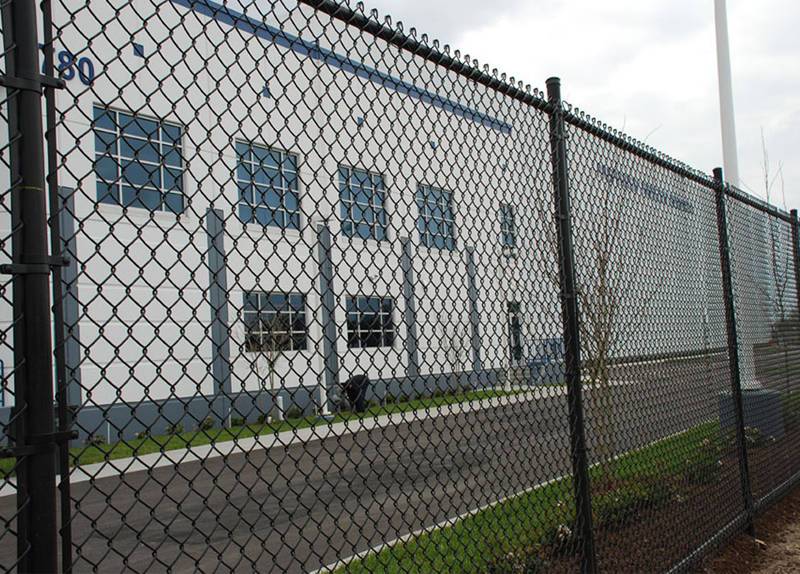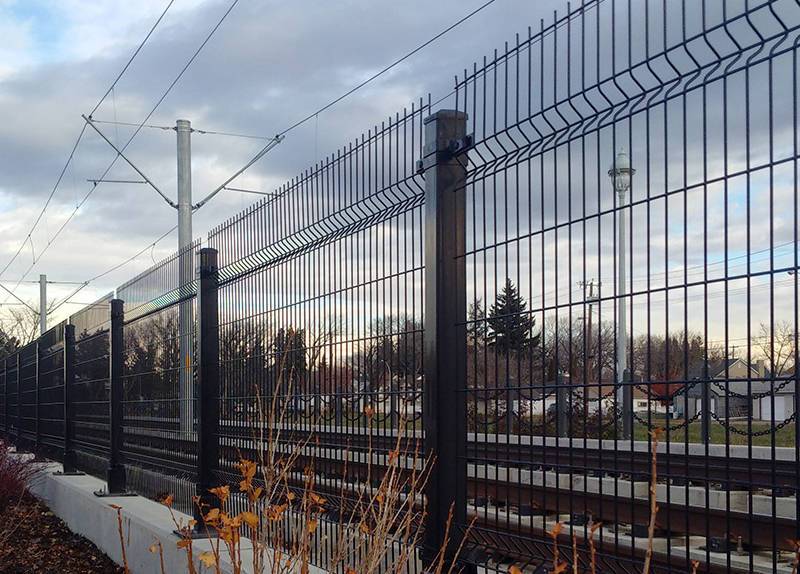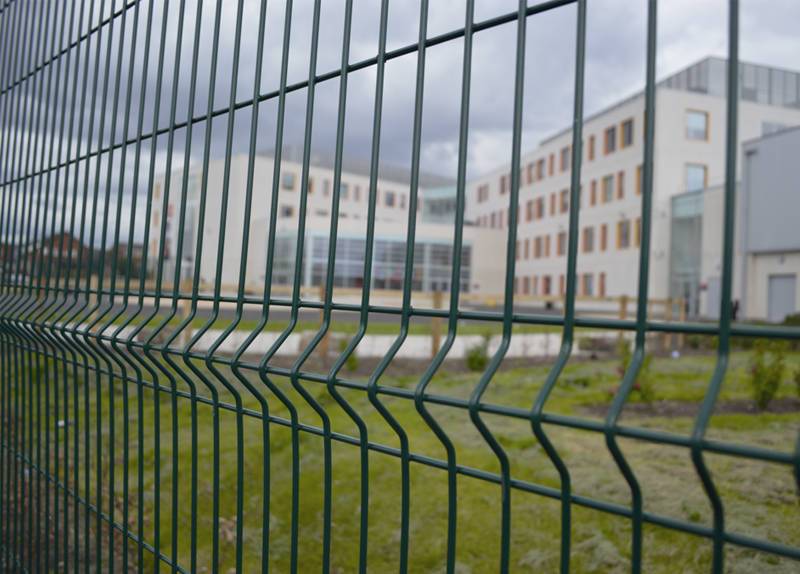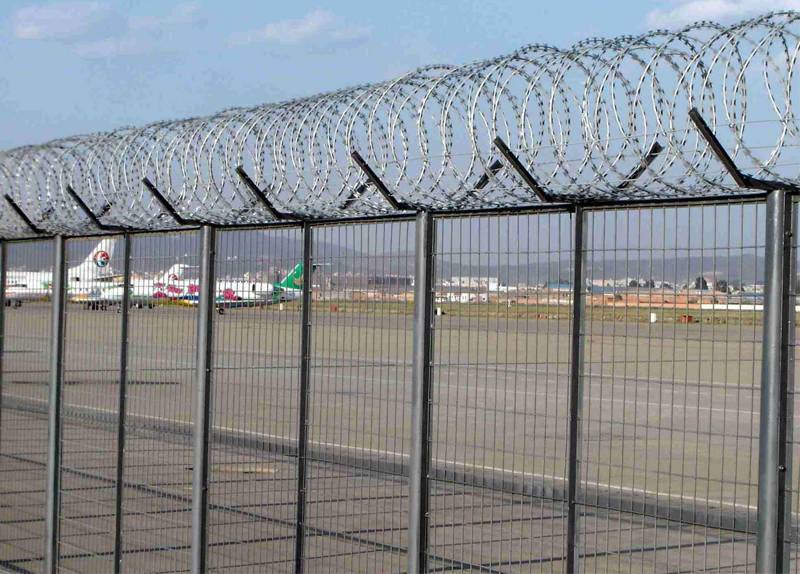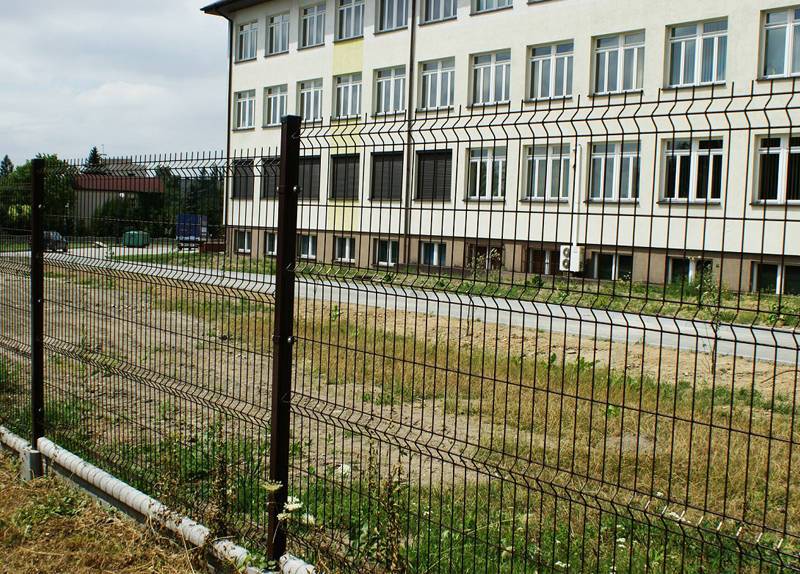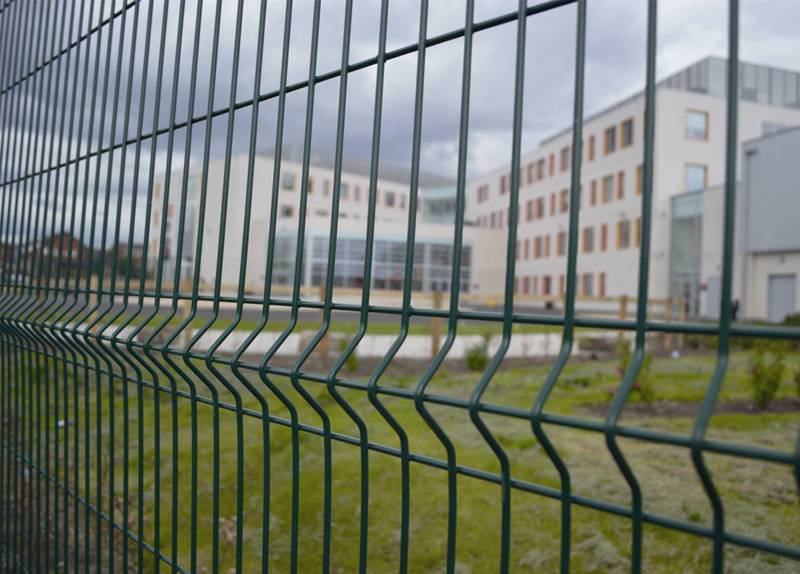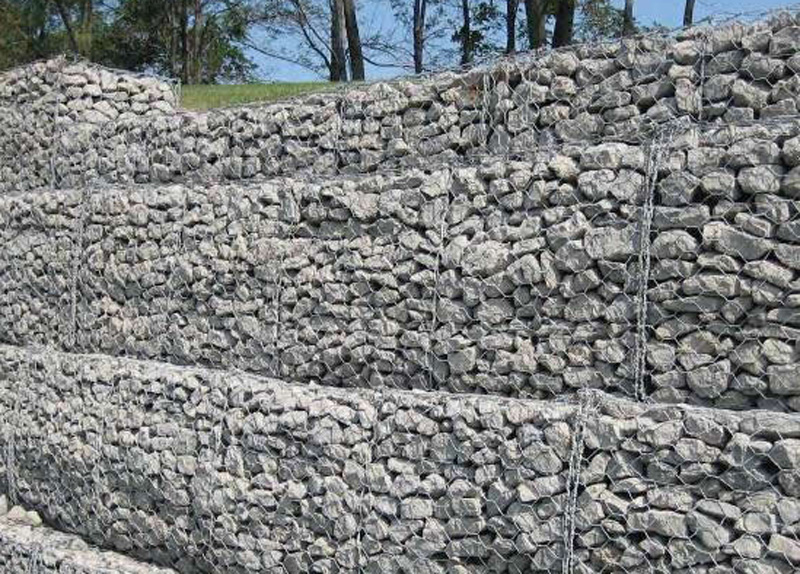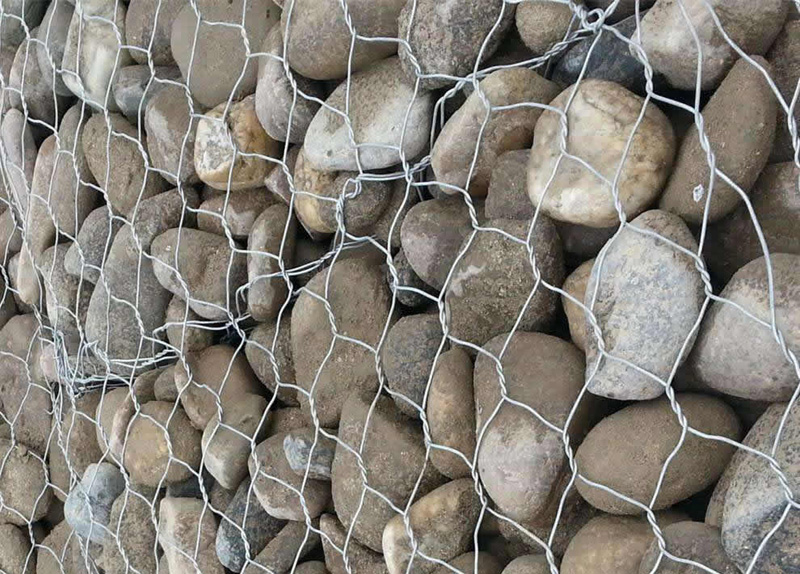Présentation:
1 Perforated Metal for Indoor Decoration:
Made of metal plates perforated with various designs with good permeability and decorative effects. Mainly used for decoration of doors and windows, panels, elevator cabinets, stand, shelf; can be used as sound absorption wall materials for the ceiling and walls in building; also used as exquisite decorative sheets for building staircases, balconies, and environmental friendly office furniture.
Materials: Stainless steel plate, aluminum plate, hot and cold steel plate, copper plate.
Features: Light weight, natural metal shine, beautiful design.
Opening Pattern: Rectangle, square, round, triangular, hexagonal, blossom, and many other special patterns according to customer needs.
2Perforated Metal for Outdoor Decoration:
Perforated metal can be used for decoration of exterior walls of the buildings; barriers in the transport and municipal facilities such as expressway, railway and subway; also used as sound and noise absorption plate in building walls, generator rooms, factories and other sources of noise.
Material: Stainless steel plate, aluminum, hot and cold steel, copper, fiberboard, plastic sheet and other non-metallic plates.
Caractéristiques:
Lightweight
Durable
Extremely versatile
Economical
Customizable
Large open area
Decorative
Many patterns, materials and gauges
Spécifications:
Options for Decorative Perforated Metal:

Note: Special size and specifications can be made according to customers requires.
Technologie:
| Hole Pattern Hole pattern is the arrangement of holes on a sheet - either staggered or straight rows. In a staggered hole pattern, the direction of the stagger is normally parallel to the short dimension of the sheet. The standard pattern is 60° staggered. It is the strongest, most versatile, and economical pattern of the perforated choices. Also available are straight and 45° hole patterns, available by special order. |
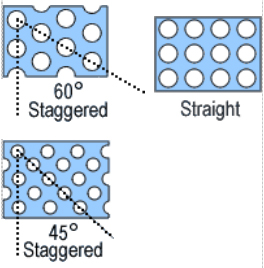 |
| Hole Size Hole size is the diameter of the perforation. HUIJIN carries a wide range of round hole sizes (from 0.020 to 1 inch) and can special order any hole size required as long as it meets minimum hole size requirements. |
 |
| Hole Center Hole Center is the distance from the center of one hole to the center of the nearest hole in the next adjoining row. Hole center is one of two measures of perforation spacing. The other is open area. Because hole center and open area measure essentially the same property (perforation spacing), you need specify only one or the other, not both. |
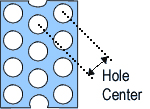 |
| Open Area Perforated sheets contain holes and material. Open area is the total area of the holes divided by the total area of the sheet and is expressed as a percent. In other words, open area describes how much of a sheet is occupied by holes. If a perforated sheet has 60 percent open area, then 60 percent of the sheet is holes and 40 percent is material. Note: Specify either Open Area or Centers, but not both. |
 |
| Thickness or Gauge Thickness is the measurement from the top surface to bottom surface of the material. Gauge is the most common measurement, but thickness can also be measured in fractional inches or millimeters. |
 |
| End Patterns End pattern is the pattern of the perforations at the beginning and the end of the sheet. End patterns are either finished or unfinished. An unfinished end pattern is standard. A finished end pattern requires special tooling and is typically more expensive. |
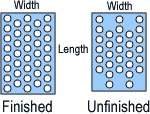 |
| Length and Width Length is the overall measurement of the long side of the sheet; width is the overall measurement of the short side of the sheet. Note that mill tolerances for length and width apply to stock sheets unless otherwise specified. If you have a stock sheet cut-to-size, cut-tolerances apply. To specify other than standard tolerances, please use the perforated round hole pattern quote form to specify the required tolerances. |
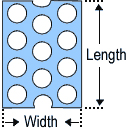 |
| Quantity Quantity is the number of full sheets or cut pieces you need. Unless otherwise specified, the standard tolerance on quantity is 'Exact Quantity'. In other words, HUIJIN will deliver the exact quantity you specify. |
| Bar Width Bar width is the measure of the material between the outer edge of one hole to the outer edge of the nearest hole. If you specify bar width, be be sure that the bar width meets the guidelines for minimum bar width. |
 |
| Margins Margins are the blank (unperforated) area along the edges of the sheet. For stock sheets, the standard is minimum margins along the length and no margins along the width. To specify other than standard margins, use the perforated round hole pattern quote form. Provide the width of each margin on all four sides (measured from the edge of the sheet to the edge of the first hole) and the direction to which the margin is parallel (side or length dimension). Manufacturing considerations may affect margins. If the margins requested are not possible, the quote you receive will specify the new margins. Below is an example of a margin specification based on the illustration to the right: Margins: · 1 inch margins parallel to both 25 inch dimensions· 0.75 inch margins parallel to both 48 inch dimensions |
|
| Tolerances There are tolerances on quantity, shearing, gcircle shearing, flatness, thickness and squareness, for perforated products. If you do not specify a specific tolerance, the standard tolerance applies. Tolerances can be specified on the perforated round hole pattern quote form. |
Note: Special designs or sizes is also available at customers request.
Open Area Calculation
  |   | |
 | ||
 | ||
  | ||
 | ||
To Find the Holes Per Square Inch:
H.P.S.I =(% Open Area)/78.54 x D2
Désignation de Produit: Decorative Perforated Metal




